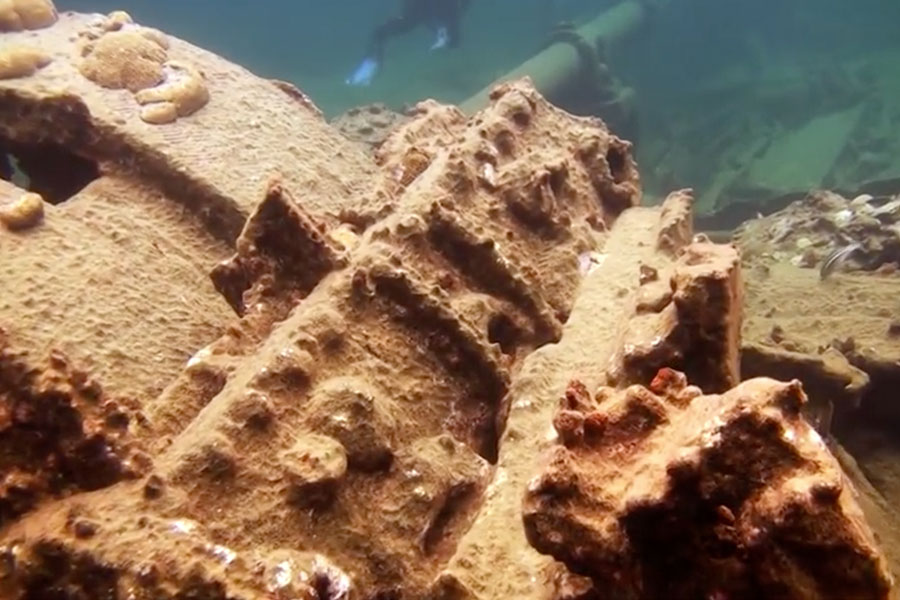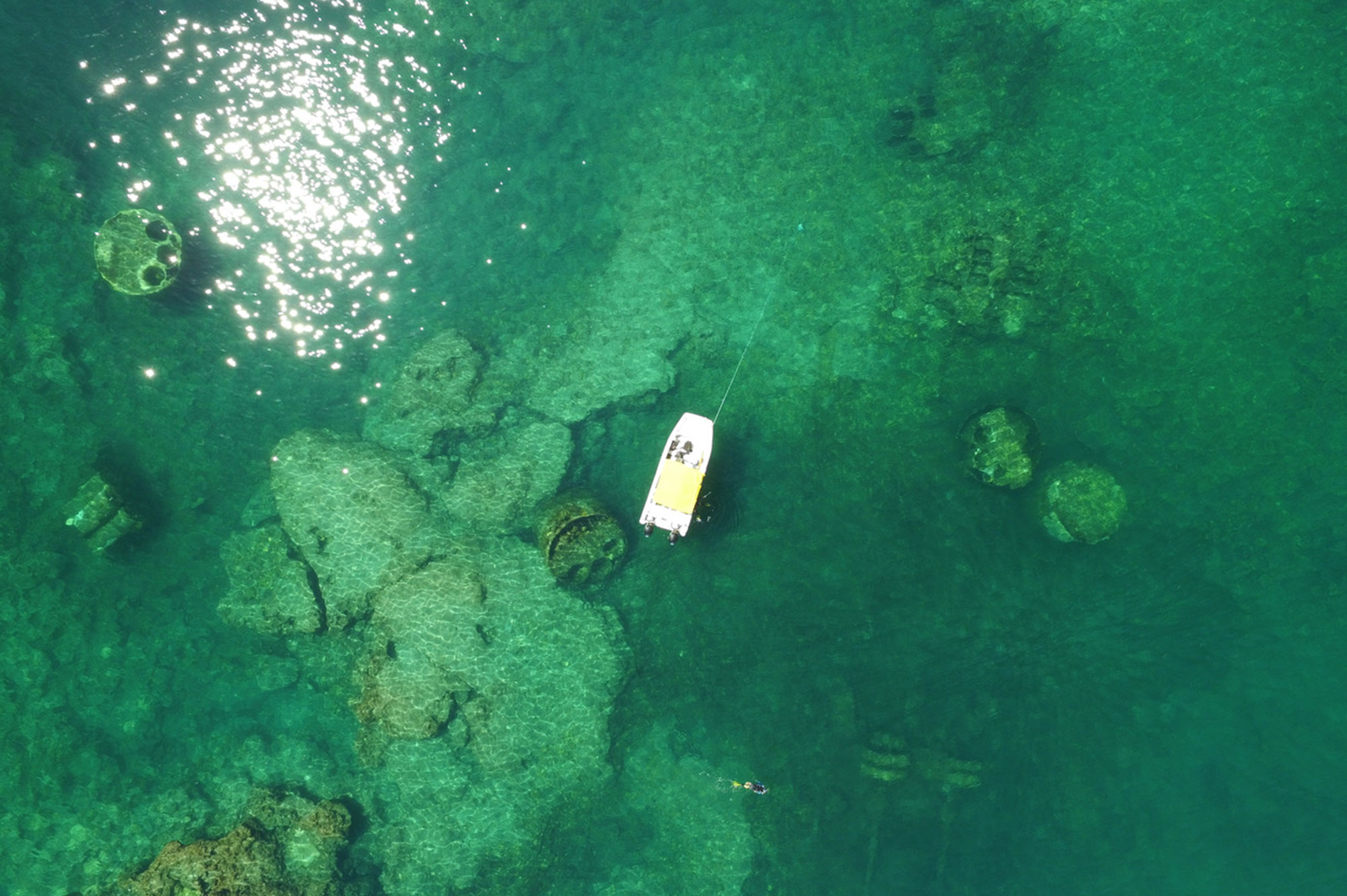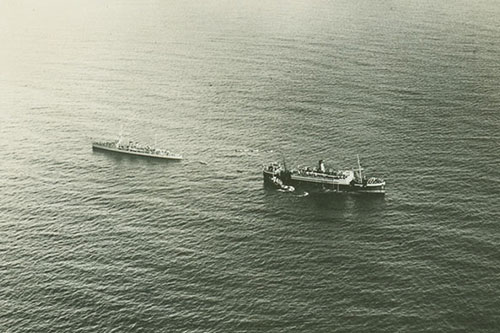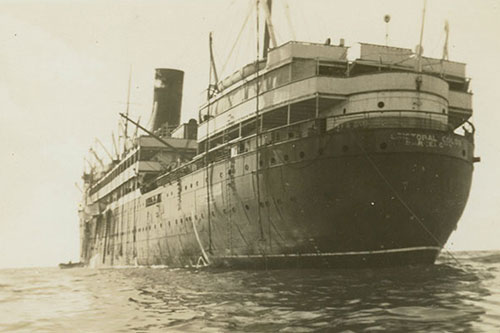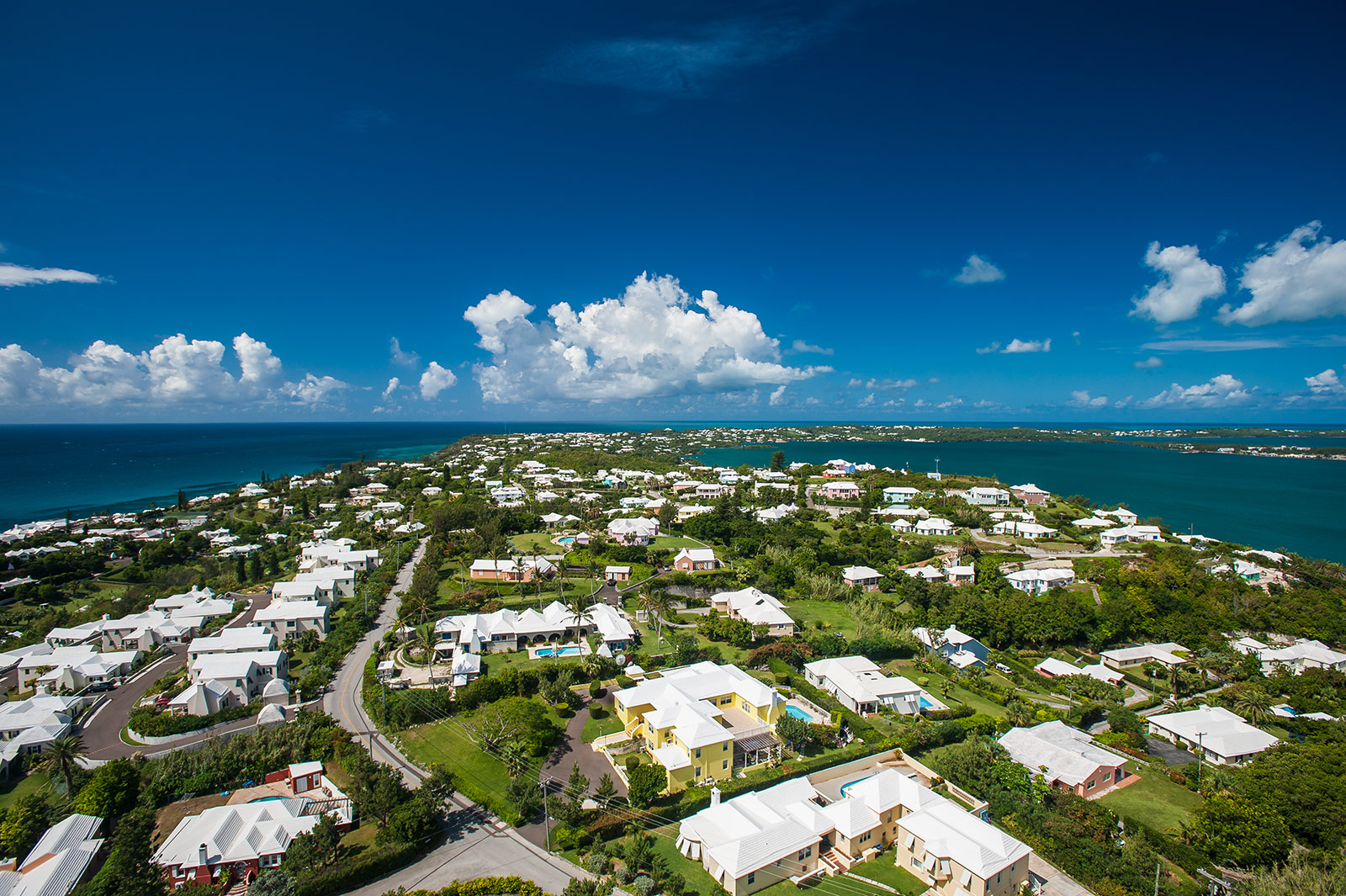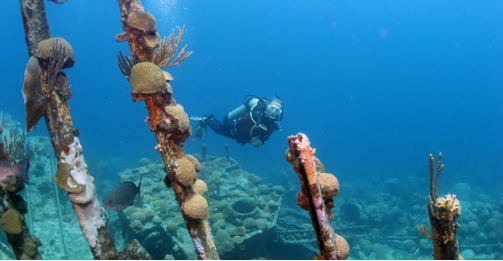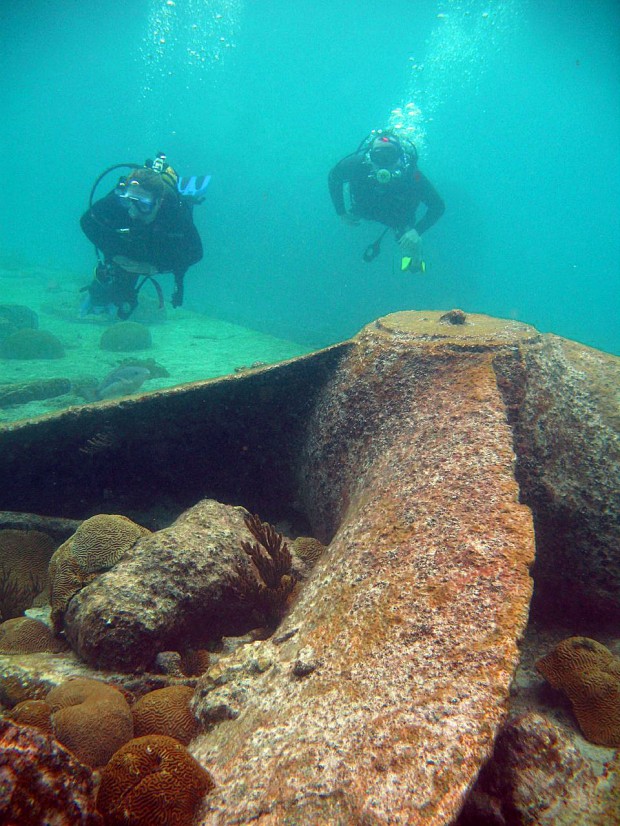Built in 1923 by the Sociedad Espanola de Construccion Naval for the Transatlantic Spanish Line, this luxury cruise liner is the largest of Bermuda’s shipwrecks. The massive Spanish vessel, the Cristobal Colon, weighed over 10,000 tons, had three decks and was nearly 500 feet long with a 61-foot beam. She was one of the most luxurious cruise ships of her time. She mainly operated between New York and Central America, but at the time of her sinking, the Cristobal Colon and 160 exclusively male crew (with no passengers) were traveling from Cardiff, Wales to Vera Cruz, Mexico (reportedly to collect arms for the Royalists in the Spanish Civil War). On October 25, 1936, while steaming ahead at 15 knots, Captain Crescencia Navarro Delgado mistook an offshore communication tower for the Gibbs Hill Lighthouse (which had not been working while being repaired starting on October 10). The ship crashed into a coral reef just east of North Rock, eight miles north of Bermuda. When all attempts failed to pull the massive liner off the reef, she was salvaged, with furnishings, paintings and fittings brought ashore and sold at auction. There was no loss of life.
Every night locals would take their boats to the wreck and return with bags full of loot. Literally hundreds of Bermudians took part in the piracy; yet only 13 were ever caught. One particularly funny story tells of a man brought to court accused of stealing a radio from the Cristobal to which the would be thief replied “Why would I steal a radio from a Spanish ship, I can’t speak Spanish”. By 1939 the ship had broken in two and there were further salvage operations to retrieve metal parts, including the propellers. British and American forces eventually sank the ship’s empty shell by using it as a practice-bombing target during World War II.
CURRENT CONDITION
Today the wreck lies in 15 to 60 feet of water, half on one side of the reef, half on the other, with wreckage covering a large area of about 100,000 square feet. The wreck site on the edge of the northern barrier reef is a haven for varieties of colorful reef fish and large groupers and other marine life, and divers see soft and hard corals, barracuda and the occasional sea turtle.. The Cristobal Colon is relatively unique as one of the few wrecks to sport rectangular portholes. Divers can spend hours exploring what remains of the wreckage, much of it still visible. The wreck is notable for the large number of ship parts that remain almost intact, including engines, propellers, and steam turbines. Also visible are prop shafts, winches, part of the bow – and a bath tub in the sand at the stern. Unexploded artillery shells are also visible in the wreckage. The ideal period to visit the Cristobal Colon is during spring and fall months, and it accommodates both the beginner and more experienced diver..
STATISTICS
Location: 32°29'6.43"N, 64°43'12.00"W Length: 499 feet (152 meters) Maximum Depth: 60 feet (18.3 meters) Tonnage: 10,833 tons Protected Area Radius - No Fishing: 300m


